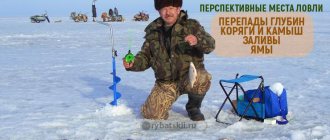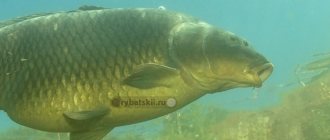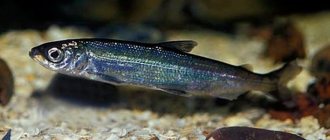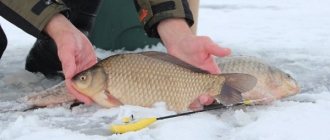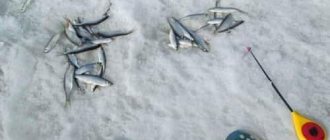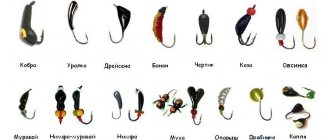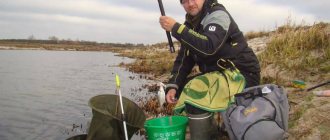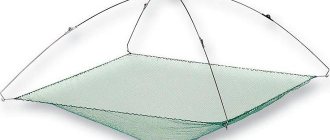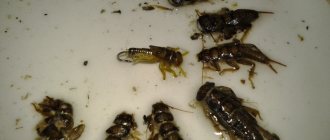Wintering options
There are several ways in which freshwater fish adapt to winter cold. They depend on the depth of the reservoir, current or lack thereof, ambient temperature and type of fish.
Wintering pits
Cooling and freezing water affects each type of fish differently. Some of them are thermophilic:
- carp;
- bream;
- carp;
- line.
Since October they have been swimming in schools to greater depths. Such deep-sea areas are called wintering pits. Features of this wintering:
- At depth, the fish spend 3 months or more, huddled together closely and hardly moving. Often those on the bottom layer develop bedsores.
- Fish of the same species and age usually overwinter in small pits. This is explained by the fact that with less intense metabolic processes for a large number of specimens, the conditions are optimal.
- During wintering, fish secrete mucus. It does not allow the bodies to come into close contact with each other and serves as a kind of thermal cushion.
- Catfish spend the winter not in the pits themselves, but next to them. They cannot tolerate the deterioration of the oxygen regime, which necessarily occurs some time after the formation of the ice cover.
Complete passivity
This type of wintering is most often chosen by crucian carp. It simply freezes close to the bottom of the reservoir, completely stops moving and feeding, and in this position waits for spring. Metabolic processes in the body slow down greatly, which allows the fish to survive in cold and hungry times.
Burying in silt
This is a kind of complete passivity. It is suitable not only for crucian carp, but also for many other species.
The fish sink to the bottom, burrow deeper into the layer of silt and freeze. Immobility helps not to waste energy (which means there is no need to replenish it), the silt serves as a cushion that protects against freezing.
Migration
Some fish, such as salmon, go to the southern regions for the winter. Over the summer, they accumulate enough fat, grow, and with the approach of cold weather they move to warm seas, where they spend the winter closer to the bottom. This process is called "migration".
After the end of winter, fish that have fattened in sea water return to the rivers to spawn and continue their race.
Keeping active
Some species of fish, most often large ones, do not lose activity during cold weather. Constant movement provides their bodies with energy and warmth, and food becomes fed by small things that have not hibernated: roach, bleak, ruffs. Even your own fry can serve as food.
Spawning
A wintering type commonly used by burbots. In warm water, the fish feels depressed and goes into hibernation as soon as the temperature rises above 15-16° C. But winter is the most favorable time of the year.
With the onset of autumn cold weather, burbot actively fattens, and in winter begins to reproduce. It spawns in cold water under a thick layer of ice, laying eggs on the rocky bottom of the reservoir.
Freezing
Small bodies of standing water freeze to the very bottom in severe winters. Sometimes even the mud in which the fish are buried freezes. The inhabitants of ponds, lakes and swamps, in which there is no current, have adapted to this.
Fish that calmly endure the winter in complete passivity (for example, crucian carp and dalia) freeze into a layer of ice, falling into complete hibernation. When the ice thaws and the water gradually warms up, the fish wake up and begin an active life.
Only if the gills and fluid in the body of an underwater inhabitant freeze very much does it die. This rarely happens.
Where do the fish go in winter?
To understand how fish change their location from one period to another, in this case from summer to winter, one of our readers conducted a study of the place where he fished in the summer. This happened at the beginning of last winter. We are confident that his conclusions and observations will be interesting and useful to all readers of the journal.
Favorite river
I have always loved this section of the river very much: several river bends running one after another with steep banks, under which darkened the calm currents of the pool with trees that had fallen into them during previous floods. Along the banks there is a pine forest and sandy soil. And, accordingly, clean river sand at the bottom of the river.
From the second half of summer and autumn, pike always caught well on jigging rods and spoons behind pine trees that had fallen into the water at depths of 1.5–3 m. And in the snags sticking out from the shore in the form of logs and branches (depth 1.5 m) a good (100-200 g) perch was hunted, which was caught with a worm from the bottom or with a summer fishing rod with a nod to the jig.
On the other bank, on stretches with a slow current (about 1 m), near sparse coastal grass and algae, roach, chub, dace and gudgeon were constantly spinning. Caddis flies, bloodworms, and small dung worms were always a welcome bait for this fish when fishing with a hook.
Mid December
All this happened in summer and autumn. But what now, in mid-December? Ice appeared on the river a couple of weeks ago. It is still quite thin (6-8 cm), but if you do not go out into the middle of the river, into the rapids, then it is quite possible to fish. For safety in the hands, an ice pick and light but strong pine poles 2.5 meters long, tied crosswise. You can also go on ice with them.
Catching pike with a winter lure in holes under the snags known to me did not give any results. But fishing with a jig in the intervals between them was pleasing: with a small tungsten jig in a weak current, roach, dace, medium-sized perch, and ruff caught bloodworms. From the bottom a gudgeon was caught on a float rod. So now I'm with live bait! And he even installed several girders.
Catching perch with a jig under coastal snags was met with varying degrees of success. This is not to say that the perch did not take, but the caught specimens (50-100 g) were far from summer ones. In addition, it was rarely possible to get more than 2 fish out of the holes in a row. Then the bite stopped.
Fishing on the stretch brought nothing. In principle, it was already clear that the small fish scurrying there in the summer moved to the opposite “deep” bank, where they were quite successfully caught with a jig.
The next day
When it began to get dark, I placed six gudgeons with caught minnows and ruffs (on the bottom) in the shallows of the reach. Four more girders were placed close to the bottom at the site of summer pike bites near trees that had fallen into the water.
Arriving at the place in the morning, I discovered that a couple of good (600 and 800 g) burbot were sitting on the girders installed on the reach. Here it is - the burbot trail! This means that it is possible to place burbot traps here in the future. I won't be left without a catch!
I also noticed that the burbot took only the gudgeon and ignored the ruff. Having removed these girders, I moved them to the opposite bank, to the depth where small change was now found, and began catching perch in the coastal snags. Little has changed since yesterday: the perch was not large, and not often.
It was about 10 o'clock in the morning when almost simultaneously 2 fire alarms sounded in the area of flooded trees. Two small pike (1 kg and 1.2 kg) rewarded my patience and faith in this place. A little later the third one worked. But, unfortunately, during hatching the fish came off the hook.
As a result
What conclusions can be drawn as a result?
- Firstly, the pike did not leave the convenient section of the river chosen in summer. Its stay on it was “secured” by the small matter that moved from the reach closer to the depths.
- Secondly, the shoal turned out to be a “burbot”, and now you can fish on it all the time. The choice of the desired live bait was made by the burbot himself - this is a gudgeon!
- Thirdly, large perch left the snag, giving way to small ones. I can explain this by the fact that the “big fish” went to places with a lot of food. Most likely downstream into a larger river or other body of water.
- Fourthly, small fish, having left the shallows, did not go far, but simply moved to the nearest depths, where the water is warmer.
In the summer, I also advise you to take a closer look at the places where you constantly fish, study the pools and shoals you fish, notice snags, underwater terrain, and pay attention to the speed and direction of the current. Then in winter it will be quite easy for you to achieve success in your favorite areas of reservoirs.
How to help fish in a pond survive the winter?
Many fishermen are directly involved in organizing wintering for fish. Especially when it comes to small ponds with stagnant water or homemade reservoirs stocked with fish on their own.
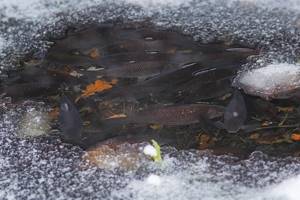
You can provide pond residents with a comfortable winter in the following ways:
- After the thickness of the ice on the water reaches several centimeters, drill a small hole in it. Using a pump, pump out a layer of water about 15 cm through the resulting hole. The oxygen that has entered the resulting space is enough for wintering fish.
- When the water begins to freeze, place tufts of straw on the surface, pointing up. Its tubular stems will provide oxygen access under the water when there is ice.
- Make several depressions in the bottom of the pond that will serve as wintering pits. The fish will be able to “lie down” in them to wait out the winter calmly.
Please note that the fish must go to winter healthy, without injuries or parasites. The pond should also be cleaned, without abundant thickets and food residues. All these shortcomings make wintering difficult.
What does a fish look like in a dream?
You can tell that a fish is in a state of sleep by its changed behavior and decreased physical activity. Often she makes no movements, only slowly wiggles her tail. Her eyes are constantly open - both during sleep and while awake.
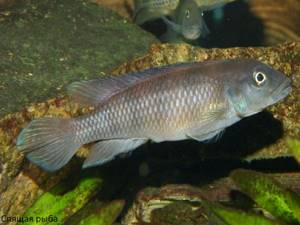
Why doesn't he close his eyes?
Fish have no eyelids, so their eyes never close.
The structure of the visual organs of the inhabitants of the depths does not provide for the presence of eyelids and lacrimal glands. Water constantly cleanses and moisturizes the surface of the eyes. When in an aquatic environment, fish do not need to clean the surface of their eyes in any other way.
The field of view is quite wide. They see well from all sides. The eyeballs are on both sides. Each eye captures the image from its own side. In front, the fish can focus on 1 object with both eyes.
The eye has an iris. The pupil of most fish cannot regulate the light flow. If exposed to strong light, they can go blind. Plant shades and secluded corners protect from light.
How do peaceful fish winter?
The difference between peaceful fish and predators is that the former are more thermophilic. Their usual state in winter is to retreat to depths and become almost completely passive.
Wintering features:
- Since autumn, peaceful fish species begin preparing for winter - they switch from plant foods to a protein diet in order to replenish energy reserves and gain fat. This also helps them secrete a characteristic mucus that provides thermoregulation and protection from predators. Its smell disgusts predators, and they do not touch the peaceful inhabitants of reservoirs frozen in wintering pits. Otherwise, the entire population of these species would be destroyed.
- When frost sets in and water bodies become covered with ice, peaceful fish sink to the bottom. Without moving, it remains in wintering pits until spring. Sometimes thousands of fish of different species and ages gather there.
- When thaws occur or stable sunny weather sets in, some individuals rise to the surface to take a sip of oxygen or find food. These are usually small or medium sized fish. Large ones can remain dormant all winter thanks to accumulated fat.
Fishing in autumn
The advantage of fishing is that it can be done all year round. But autumn fishing is a different story! It becomes a real test for the fisherman. Yes, yes, a real test! After all, with the onset of autumn, the air temperature begins to drop, large fish presses to the bottom, looking for secluded places in oxbow lakes and bays. At this time, the fisherman needs to take into account many nuances, from camouflaging gear to choosing the right bait. On the eve of cold weather, the fish are intensively looking for food, so it is easy and simple to catch it both on warm sunny days and on gloomy and cloudy days. In autumn, the weather is not very stable, it is exhausting with rain, and every day it becomes cooler.
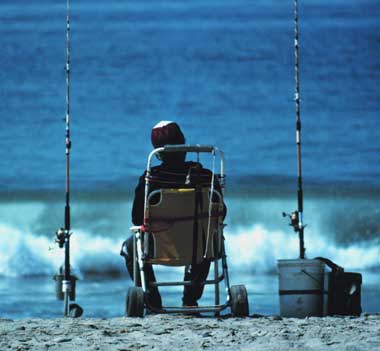
If you plan on shore fishing, then you need to look for places with low draft and plants hanging over the water. Here it is better to practice retrieving, it is preferable to have a long rod, a thin line, and a medium-sized hook. In fact, a bottom and float rod will be a win-win option. You can fish with float tackle from steep banks, launching the bait no higher than 50 cm from the bottom. For bait, use a worm, grasshoppers, dough or bread.
Also, a very successful option can be fishing with a retrieve using a grassy frog, which is placed behind the back, with the sinker hooked at a distance of 20–30 cm from the hook. This distance is necessary for free movement. It is launched 1–2 m from the surface. If the frog swam 20–30 m and there was no bite, the wiring must be repeated. You can mainly catch chub with a frog; catfish, asp and pike are no exception.
In windy weather, you need to change tactics, hook a jig instead of the usual hook, change the depth of the float rod and fish from the bottom. Effective baits will be maggots, worms, whitebaits, bloodworms, and crawlies.
Probably all experienced fishermen are aware that when a light transparent web appears in the air, pike, ruffe, and trout begin to eat. Now is the time to arm yourself with tracks, spinning rods, and load mugs with live bait. The trout goes to spawn and becomes greedy and gluttonous, biting well on worms and crawlers.
In autumn, places where the depth is over 5–6 m become a haven for perch on lakes. For a good bite, the bait is placed on an additional hook or a spoon hook. You can use fry and grandma as bait. To increase the bite, the headstock should be baited from the tail, without touching the breast, so that it moves. Cold weather continues, the fish go deeper, and the donka comes to the rescue again. Good bite at dawn, late evening and during the day. For bait they use a worm, a spindle, a frog. These baits can attract ide, perch, silver bream and roach.
Potato harvesting begins - this is a sure sign that fishing for heat-loving fish has stopped; the bite of carp, silver crucian carp and ide is decreasing. At the same time, burbot fishing is intensifying. Burbot is a sedentary fish and does not go far from its places. You need to remember such places to use next time. At low temperatures, the chub lies in depth and looks for a place to winter. And only on good days does he come out to feed, but again not far from his “den”. You can catch it with worms, crayfish, chicken livers and offal. The pike bite continues, which is best targeted with a spinning rod. Weighty silicone baits on jig heads, spinners and spinners will be used.
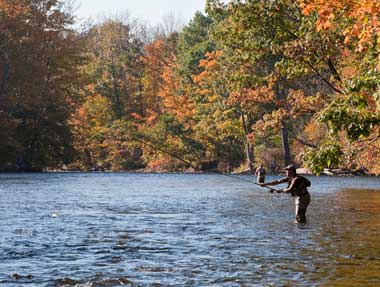
With the passing of the Indian summer that amused us, the bite for pike perch, grayling, perch, silver bream, dace, bream and roach begins. On such days it is possible to catch pike perch using various foam rubber and polyurethane foam fish, including heavy oscillating spoons. Catching perch with a spinning rod is the most active and exciting hunt for the striped beauty. There are such baits for catching it with a spinning rod: universal, poppers, spinners, twisters. It should be remembered that perch is a schooling fish, and by making regular casts you can get a good catch. When catching perch, fishermen can use leeches; such bait will attract them very well. Practice shows that roaches are caught using complementary food, which is scattered in small portions with the purpose of only luring and not feeding. In the fall, the silver bream forms in flocks and swims to wintering pits. During cold weather, at the end of autumn, until freeze-up, it can be mined at a depth of 8–10 meters.
Cold days, frosts are coming, snow has appeared, and almost all the fish migrate to the deepest parts of the reservoirs. The ide bite begins, and on dark, stormy nights you can quite successfully catch burbot. Perch still bites on small bait bait using jigs and vertical lures. When fishing in lakes, you can look for it in strips of algae, near snags and in clogged areas of the bottom. They almost stop biting - podfish, bream, rudd and barbel. Although the roach has begun to go deeper, it still swims into shallow water, closer to the shore, to profit. Pike stop biting until freeze-up. Trout goes to spawn.
It should be remembered that the behavior of fish directly depends on the type of reservoir, as well as on weather conditions.
Post Views: 2,768
— Advertising —
Features of wintering of predatory fish
Predators, distinguished by their large size, slow down their vital activity only during the most severe frosts, and the rest of the time they are active. The fact is that these types of fish prefer twilight, and the ice on the surface of the water creates such twilight.
Large predatory fish have enough food in the form of small things that have not yet sunk to the bottom. Therefore, fishermen know: the most successful fishing occurs at the beginning and end of winter. Only perch is well caught throughout the cold season - it survives due to the fat accumulated in large quantities.
Unlike other predators, catfish prefer to spend the winter passively, lying just above deep holes. To do this, they gather in groups, although at other times of the year they prefer to live in secluded places.
Fish have managed to adapt to living in any climatic conditions, including cold winters. Beginner fishermen will need knowledge of how underwater inhabitants winter, so that the catch is successful even in the cold season.
0
0
Copy link
What is a fish dream?
When a fish sleeps, there is a period of relative inactivity. Her movements are minimal or virtually non-existent. The muscles relax. Breathing and heart rate slow down. Reaction to the environment is reduced. Some species lose their vigilance during this period and can easily be caught with your hands. But most species in a sleepy state continue to sense danger well.
Underwater inhabitants do not fall into deep sleep and are not completely disconnected from the surrounding reality; they are capable of switching to a state of wakefulness at any moment. This is due to the habitat and structural features of the organs of these animals.
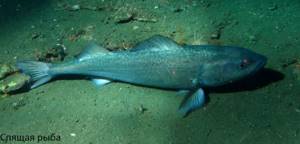
When they fall asleep, fish individuals doze and their brain activity does not stop. They continue to hear sounds, be aware of their location, and are constantly in a conscious state.
Observant aquarists can practically determine whether fish are sleeping in an aquarium. From time to time, individuals freeze and become motionless. This state is called fish sleep.
The time and duration of sleep depends on many factors:
- varieties of fish;
- conditions and habitat (aquarium, natural reservoir);
- way of eating.
In the akarium, the fish are in a sleepy state at night, and are awake during the day, because... For this purpose, a person artificially creates conditions for night rest and adapts them to his lifestyle.
In the natural environment, most underwater inhabitants lead an active life during daylight hours. When darkness comes, they freeze. The structure of their eyes is designed in such a way that they see better during the day than at night. These include crucian carp, roach, herring, etc.
Other species see well in the dark, but daylight is harmful to their eyes. They are nocturnal. Most often, predators fall into this category: pike, pike perch, perch, catfish, etc.
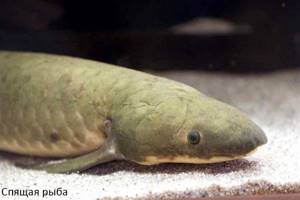
Winter and summer hibernation
How do fish prepare for winter? The inhabitants of the depths begin to prepare for the harsh season from mid-August. This is manifested in their increased feeding and proximity to the shore. They eat enough to easily survive the winter. During this difficult period, the nutritional environment becomes scarce, and underwater inhabitants live off their fat reserves. Most of them go into hibernation - bream, tench, catfish, etc. They burrow into the silt at the bottom of the reservoir and freeze.
A thick layer of ice on a pond can cause oxygen starvation. The amount of oxygen in water decreases at the end of winter. The fish begins to choke. To improve the situation, holes should be made in the ice.
When there is a strong cold snap, heat-loving fish such as crucian carp, silver carp, and carp can go into suspended animation and spend the winter in this way, but fish also hibernate in the summer heat. With a sharp increase in water temperature, with a strong shallowing of water bodies, cold-loving aquatic inhabitants of trout, burbot, and salmon are forced to suspend their livelihoods. This condition in the summer helps to survive extremely high temperatures, drought and avoid dehydration.
How to save fish from death in winter
Despite the fact that winter fish kill is a rather serious problem, it can be solved in fairly simple ways. It is enough to install an aerator in the pond, and for small ponds a compressor with an air atomization function is perfect. However, a conventional sprayer will not provide sufficient circulation if the pond area exceeds even one tenth of a hectare. In this case, the emergence of local dead zones is inevitable. Therefore, owners of large enclosed reservoirs are recommended to install special flow aerators, which will not only saturate the water with oxygen, but also create the effect of a steady flow that mixes the entire water column.
